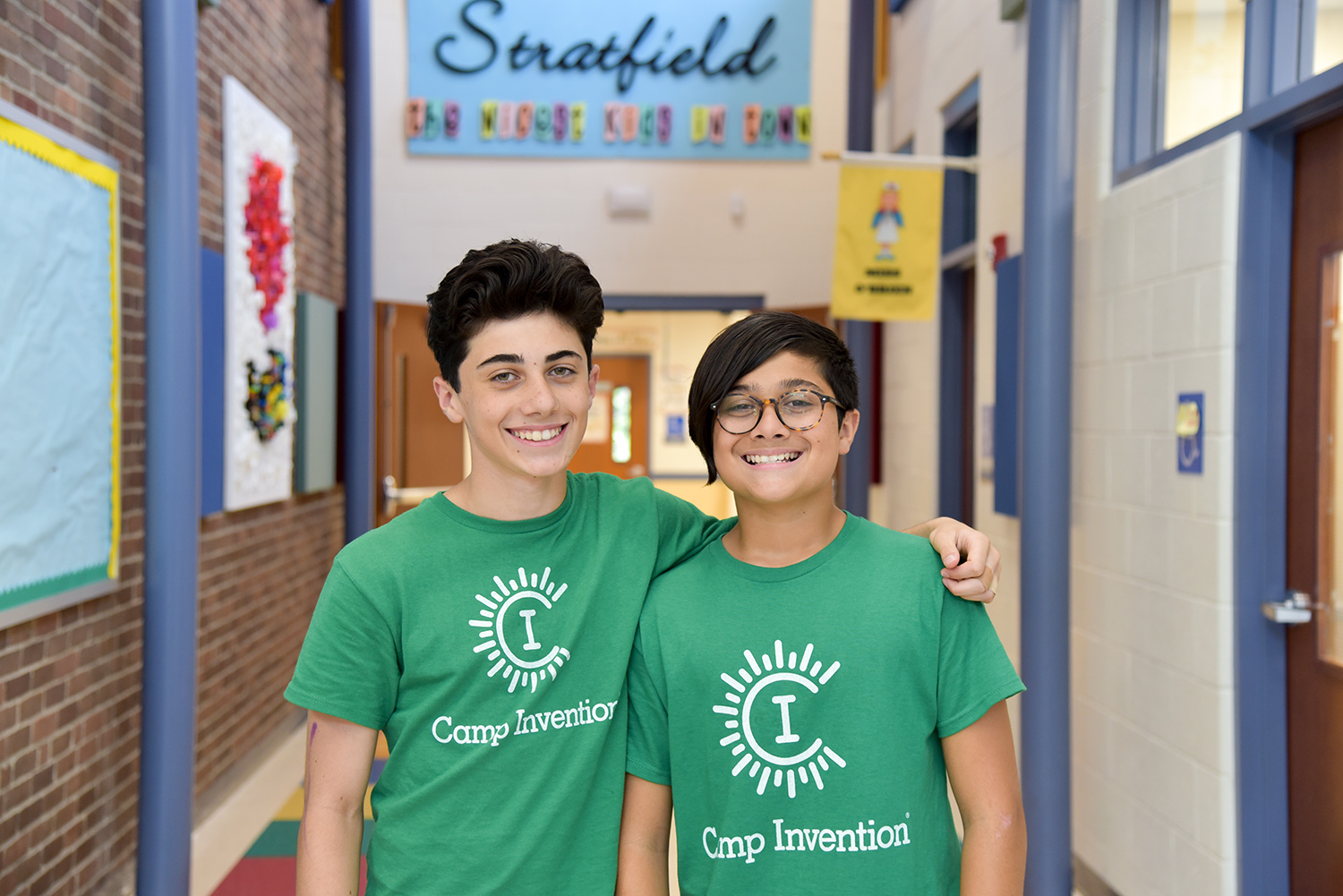
A family of entrepreneurs
With a combination of family encouragement, support, and hands-on invention education, brothers Mika’il and Ayaan Naqvi, following in the footsteps of three generations of entrepreneurs, teamed up to navigate their way from an idea to a business.
14 min read
Each month, our Journeys of Innovation series tells the stories of inventors or entrepreneurs who have made a positive difference in the world. This month, we focus on brothers Mika’il and Ayaan Naqvi.
In 1918, as a global flu pandemic wreaked havoc around the world, Edmond Desrosiers founded Derosier Storage & Moving in Bridgeport, Connecticut. A century later his great-great-grandsons Ayaan and Mika’il Naqvi followed in his entrepreneurial footsteps, founding their own business during another global pandemic.
“Entrepreneurship runs in our blood,” says Mika’il, 15, who goes by Mickey. His younger brother Ayaan, 14, quickly adds, “If it wasn’t for our parents, I don’t think we would have started a business.”
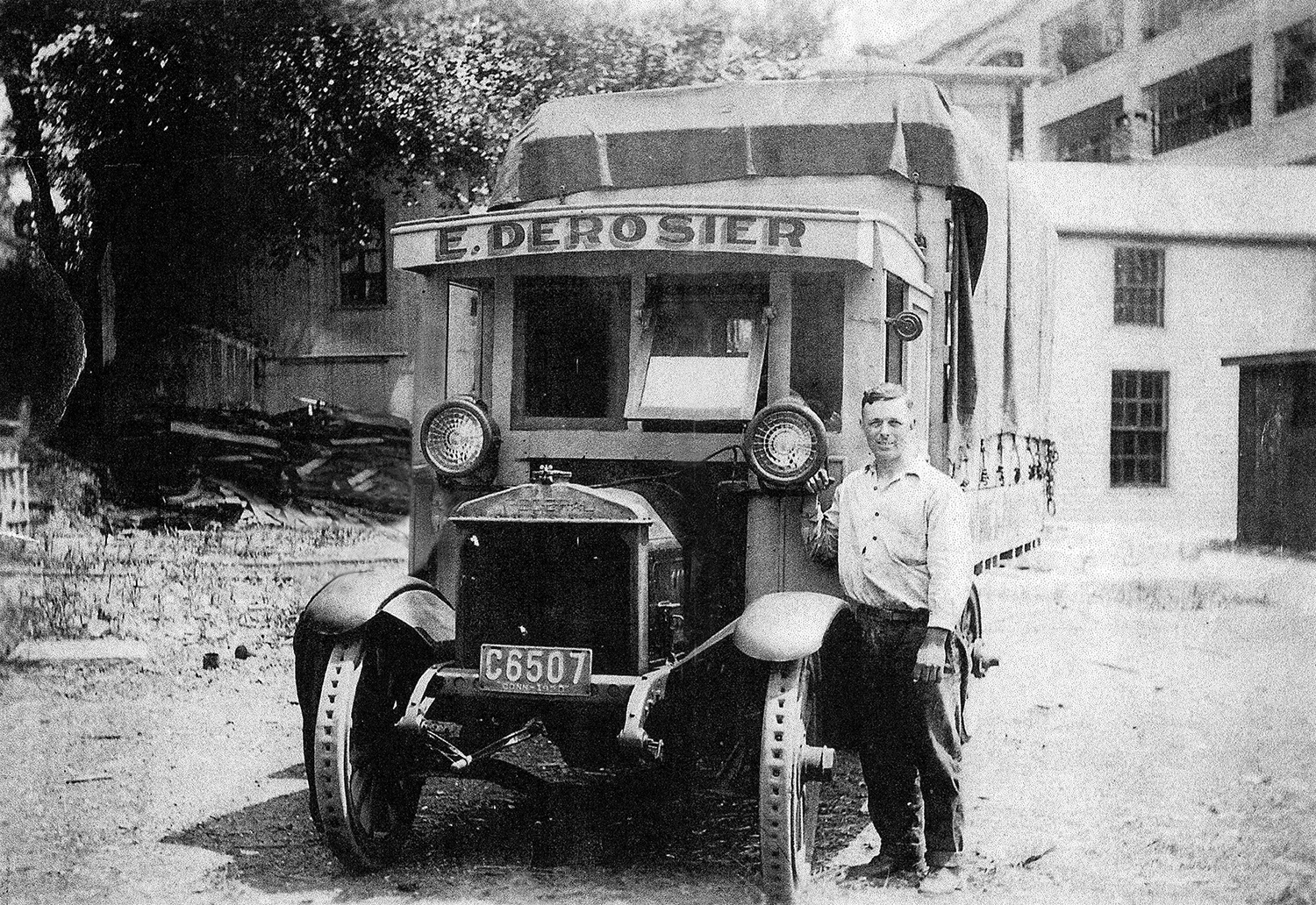
Edmond Desrosiers, who founded Derosier Storage & Moving, stands next to a moving truck circa 1920. The business remains in the family four generations later. (Photo Courtesy Naqvi Family)
The same can be said for their mother Amanda, who credits her own mother’s strong work ethic as a single parent, and summers spent in her grandfather’s furniture workshop, as the foundation for her passion to create, learn, and eventually start her first business as a teenager—an arts and crafts studio for kids.
In many ways Amanda and her husband Hamza’s children are products of their environment. As encouraging parents and role models, they helped set the stage for their children’s success, supporting them every step of the way.
The family has not once but twice appeared on ABC’s Shark Tank—the entrepreneurial-themed reality show where people attempt to secure business deals—first for an innovation of their mother’s and the second time for the brothers’ business based on Ayaan’s invention, the Ornament Anchor. They would go toe-to-toe with billionaire investors, pitching their ideas. Both times Mickey and Ayaan walked away without a deal, something that would probably crush most children’s self-confidence, but the boys took away critical lessons of perseverance and confidence.
“It was an amazing experience, but one really big thing is that you can’t always expect everything to go perfectly,” says Ayaan.
The boys may have had a bit of a head start on their path to becoming young entrepreneurs because of their family, but they were also the beneficiaries of an invention education curriculum taught by wonderful teachers who cared deeply about them and provided critical encouragement and mentorship.
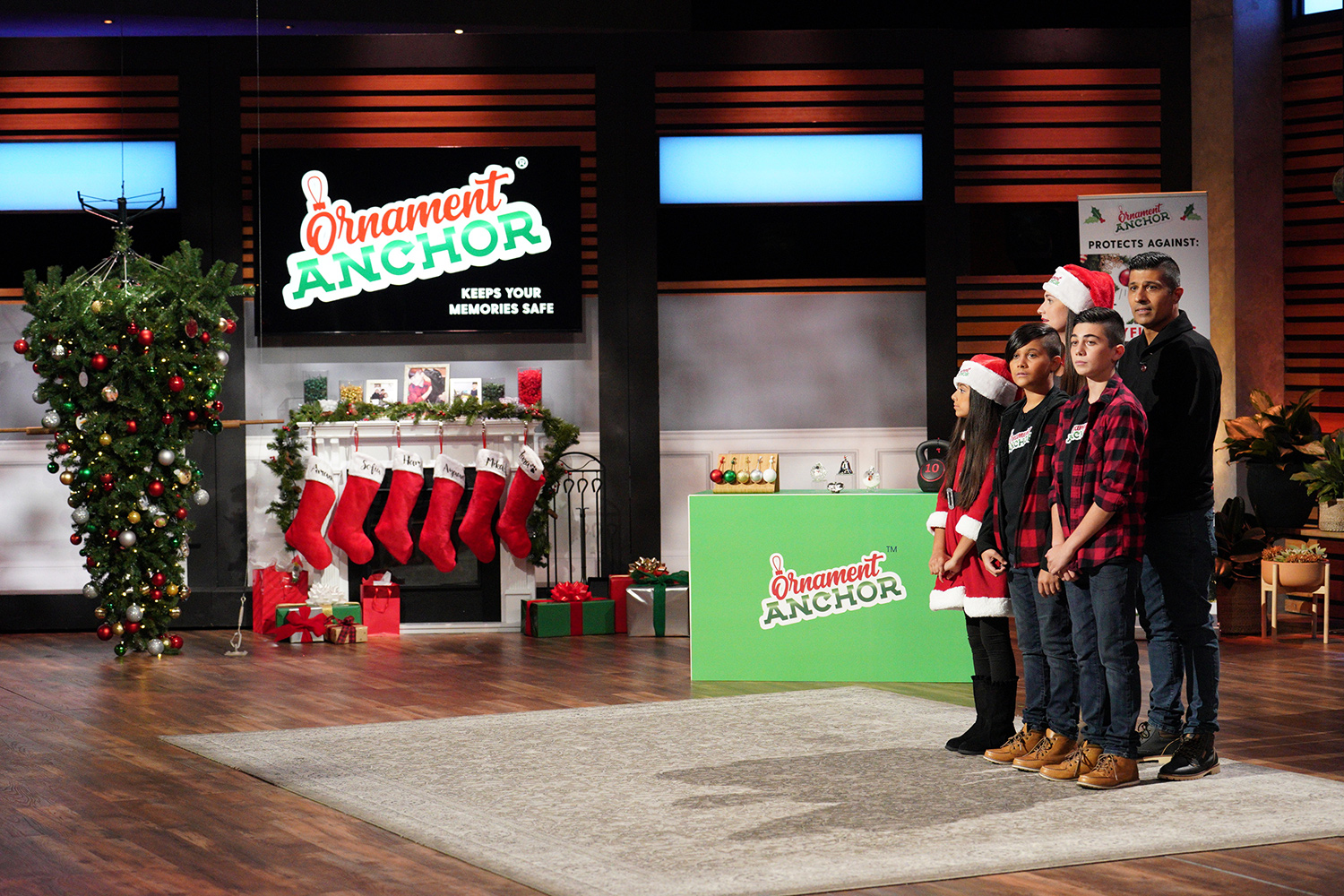
The Naqvi family appears on ABC’s Shark Tank holiday episode in December of 2021. From back left, mother Amanda and father Hamza stand alongside their children, from front left, Sofia, Ayaan, and Mika'il (Mickey), as they pitch Ayaan’s invention, the Ornament Anchor. (Photo © ABC/Chris Willard)
In the fall of 2017, as Ayaan and his fourth-grade classmates at Booth Hill Elementary School in Shelton, Connecticut entered Nick Messina’s classroom, they passed a poster with a quote from New York Yankees star shortstop Derek Jeter. It said, "There may be people who have more talent than you, but there's no excuse for anyone to work harder than you do.”
Messina says that Ayaan reminds him a lot of Derek Jeter. “Ayaan is a hard worker. Things didn’t always come easy [to him], but he would persevere through it.”
That year Messina introduced his students to a schoolwide invention convention, developing creative problem-solving and critical-thinking skills through invention and entrepreneurship. He encouraged them to look for solutions to straightforward problems. Ayaan was excited but struggled with the challenge.
“I remember we were sitting on a little rug, and he played a video introducing us to our next project, the invention convention,” says Ayaan. “I remember watching that video and it was so cool, it was the coolest thing I have ever seen, these kids my age who were making these cool crazy inventions. And I was like, I can do that? How is that possible?”
“We tried to tell them it could be something simple. It doesn’t have to be something electronic, something with a lot of moving parts,” says Messina. “Once they came up with an idea, they went through a process and had to research it and make sure it did not already exist.”
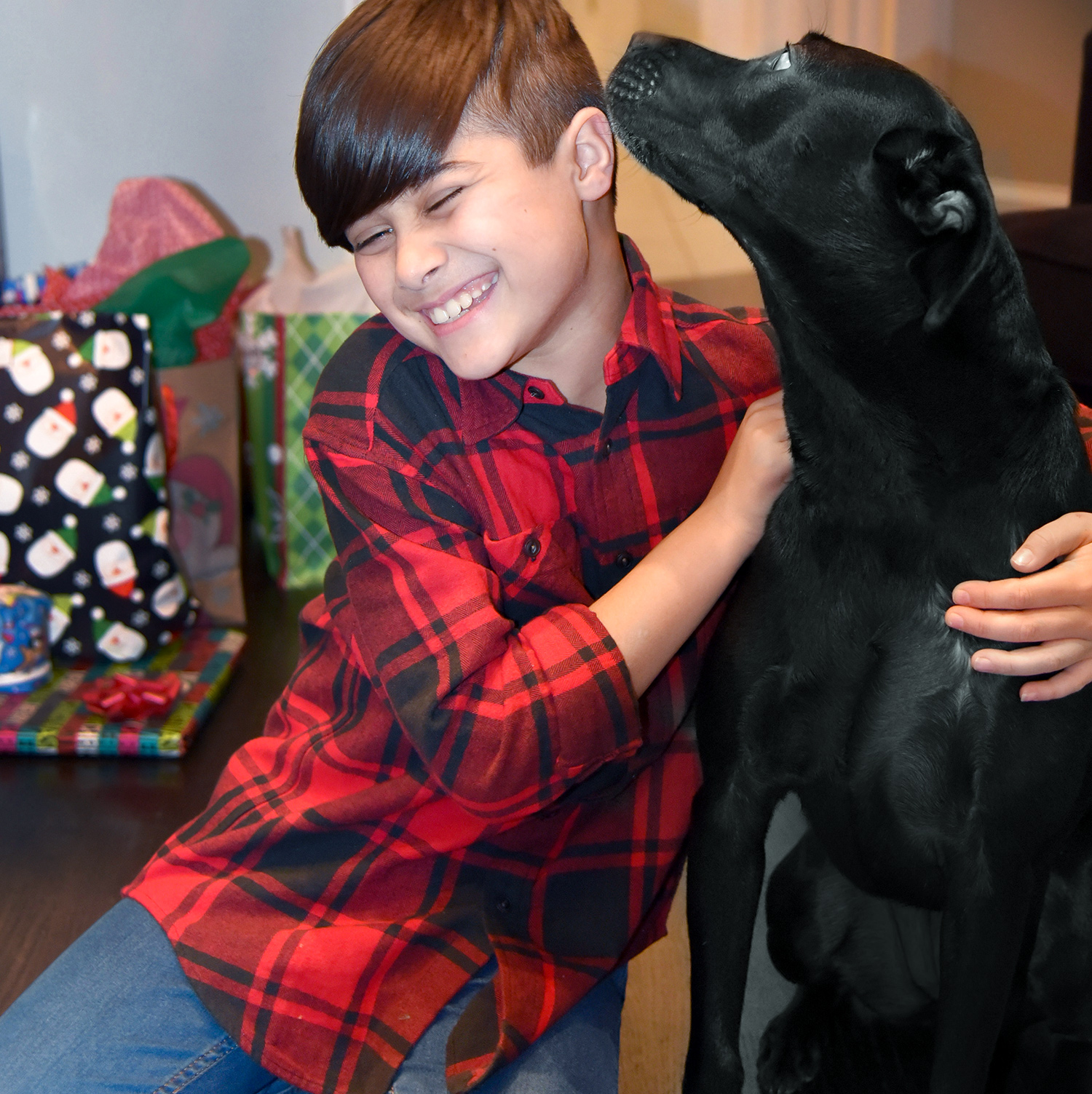
Ten-year-old Ayaan Naqvi during the holidays with the family’s rescue dog, Zara, who inspired the creation of the Ornament Anchor. (Photo Courtesy Naqvi Family)
Messina led his students through activities to get them thinking creatively, including repurposing a simple whisk into something new and taking apart small mechanical wind-up toys. He gave an overview of copyrights, patents, and trademarks, and the students continued their work taking pictures along the way, keeping a journal, and designing prototypes before sharing their creations at the culminating fair in the school gymnasium.
As his classmates forged ahead with their prototypes, Ayaan was one of the last students to come up with an invention. Following Messina’s advice to keep things simple, Ayaan looked to the family dog Zara, who they adopted from a local animal shelter, for inspiration. A mid-sized Black Labrador mix, her wagging tail had knocked precious ornaments off the family’s Christmas tree, leaving many of them in pieces on the floor—a problem Ayaan figured he might be able to solve.
The simple device he came up with, the Ornament Anchor, consisted of a short length of thin cord and spring-loaded cord lock that threaded through a hole in an ornament and firmly secured it in place once attached to the tree. He joined his classmates to present their creations, and this earned him first prize among Messina’s students.
It was also a popular hit with the fairgoers, considering the positive feedback Ayaan received. “The judges said to him, this is something that could actually go somewhere,” says Messina.
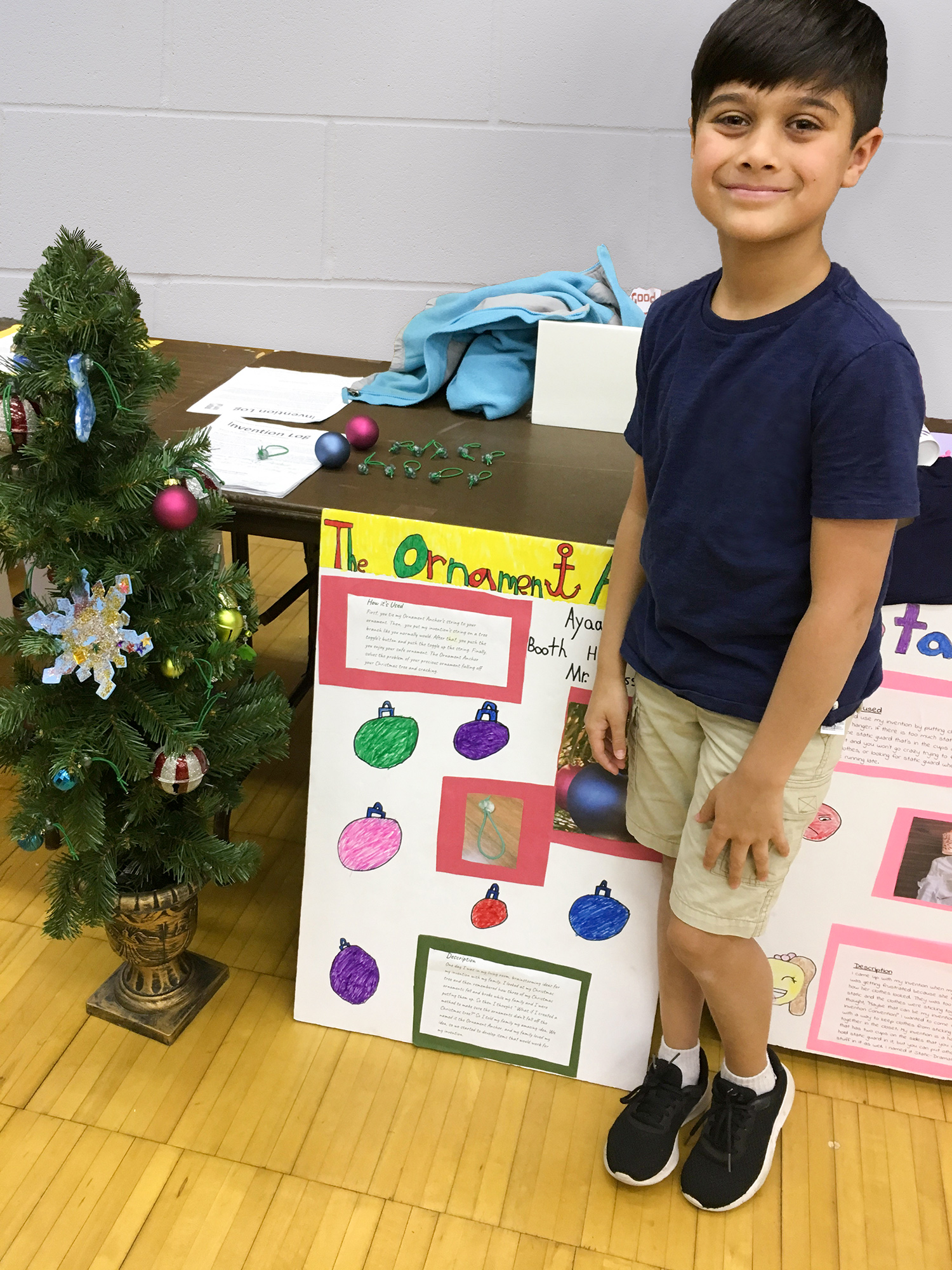
Fourth-grader Ayaan Naqvi stands proudly next to his display for the Ornament Anchor at the Booth Hill Elementary School Invention Convention in the spring of 2018. (Photo Courtesy Naqvi Family)
Mickey and Ayaan both found their way into the classroom of Enrichment Specialist Angela Catone at Perry Hill School in Shelton, though in different years. Catone teaches fifth and sixth graders how to find their creativity and expand their thinking through hands-on, project-based learning in what she describes as a safe space that allows kids interaction and engagement.
They both excelled in her classroom and she remembers the two brothers as being very different people that were intuitive and wise beyond their years. She recalls how well they worked together.
In her classroom, Catone promoted public speaking and interpersonal communication skills, two things she says the boys never needed help with.
As an advisor for the student council, she watched with pride as they teamed up even when running for elected positions; Mickey (who excelled at math) for Treasurer, and Ayaan for Secretary.
“They were all dressed up, ready to impress everyone,” she recalls. “They always had high hopes for something bigger, and they are on the path for that.”
"I knew that they were going to do amazing things, because they have an amazing family. They look at having a problem, and they turn it into a million different solutions. I mean, starting a company during a pandemic, who does that?”
She describes Mickey as an excellent problem solver and natural leader and Ayaan as a personable team-builder willing to work with everyone. Catone saw her role as keeping them challenged and engaged.
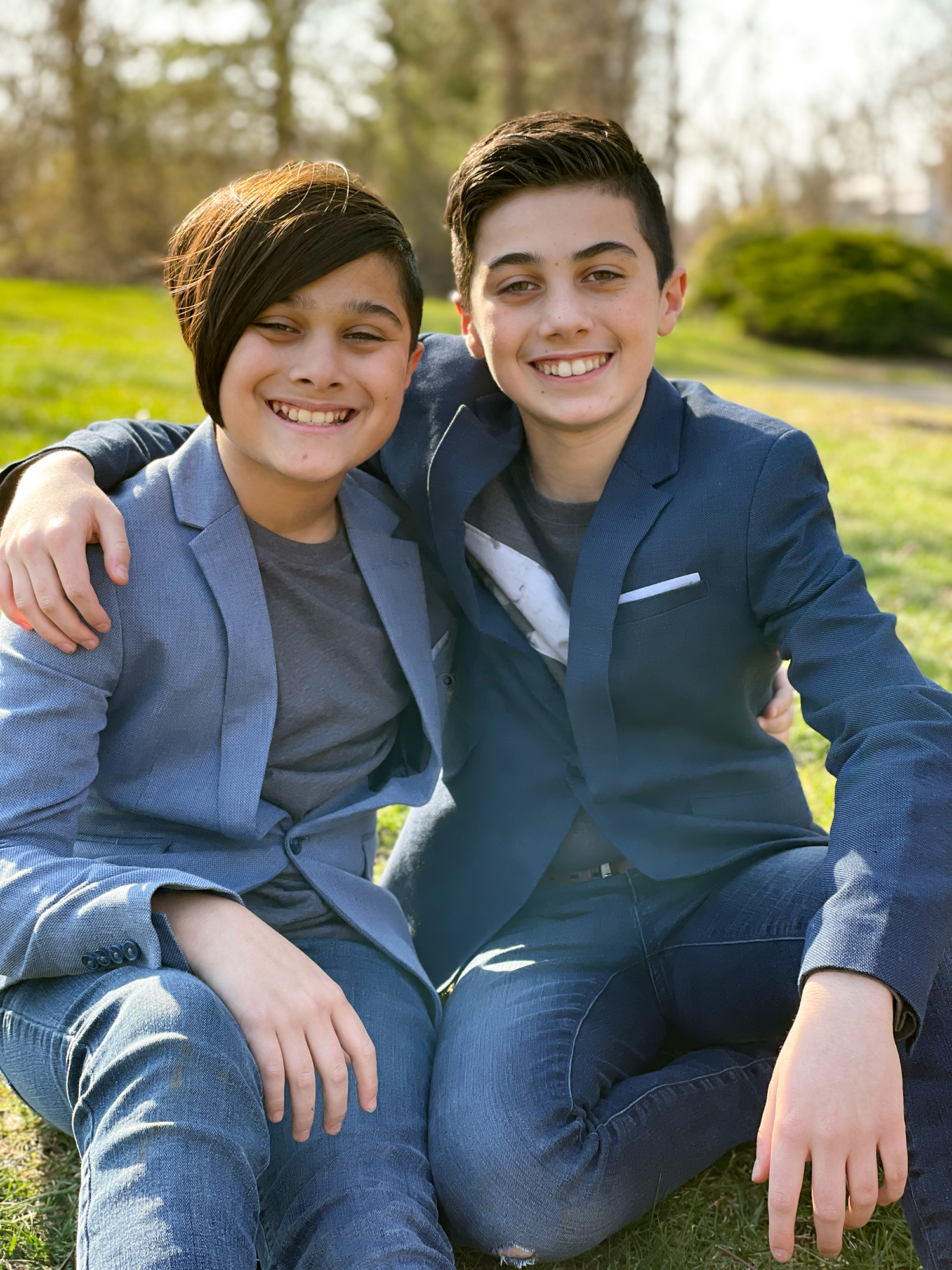
Brothers Ayaan, left, and Mickey as candidates for student council. (Photo Courtesy Naqvi Family)
She led her students through creative and fun lessons that allowed them to express themselves, develop new skills, and explore invention and entrepreneurship, while also helping them develop critical thinking, empathy, and social-emotional skills that would ensure their success, not only in the classroom but in any endeavor they set their minds to.
“They were meant for something more. To go up against Mark Cuban and hold your own - that is impressive,” says Catone, referring to the billionaire investor and owner of the professional basketball franchise Dallas Mavericks, and one of the regular cast of “Sharks” on ABC’s Shark Tank.
Likewise, Ayaan and Mickey recognize how lucky they are to have had such great teachers.
“A teacher teaches you things to know, but a teacher does not necessarily teach you how to think. And that's the thing that separates the okay teachers from the great teachers, when they teach you how to think about things. Mrs. Catone and Mr. Messina definitely did that,” says Mickey.
In 2015, four years before Ayaan participated in the Invention Convention, his older brother Mickey was encouraged by his then third-grade teacher to attend Camp Invention, an immersive weeklong summer program organized by the National Inventors Hall of Fame, which partners with the USPTO to promote creativity, entrepreneurship, and inventive thinking while also introducing students to the value of patents, trademarks, and copyrights.
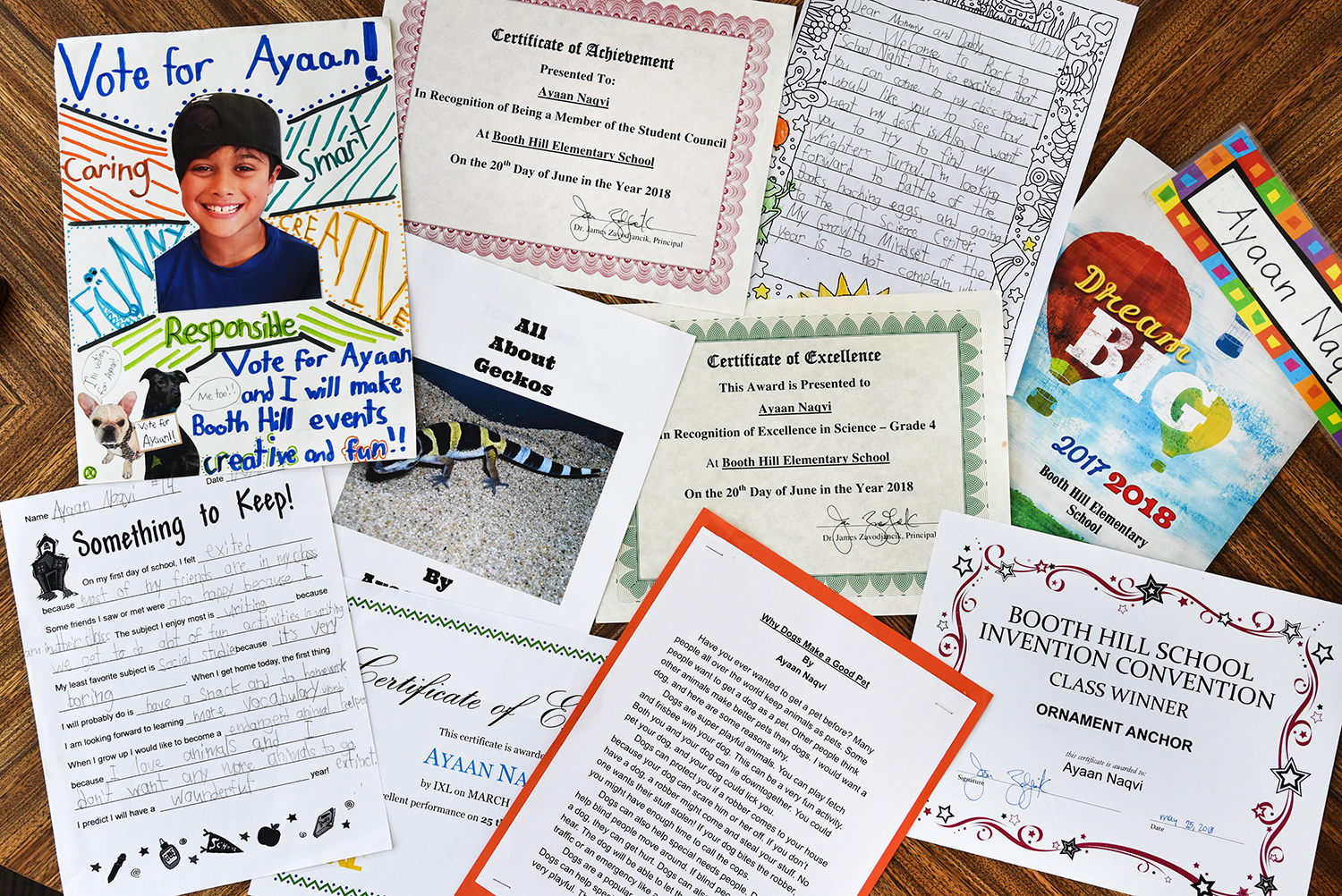
A collection of keepsakes from Ayaan Naqvi’s fourth-grade year, including an award for the school‘s invention convention, an essay on why dogs make good pets, and a handmade campaign poster. (Photo Courtesy Naqvi Family)
After overcoming the normal first-day jitters, the nine-year-old Mickey flourished. “It was a blast. I remember having so much fun, making so many friends and learning so much. I was just absorbing all the information and it was amazing,” says Mickey.
He enjoyed the experience so much that his younger brother Ayaan signed up with him in 2016 for the same class, cementing the creative bond that would lead to their collaboration and forming a business together. They were joined by their younger sister Sofia the following summer.
Camp Invention became a family affair and would become a catalyst of sorts, giving the kids a dose of knowledge about intellectual property, a robust understanding of how to take an idea from a prototype to product, and the confidence to do so.
Through their lessons at Camp Invention, they learned the critical differences between patents, copyrights, and trademarks. Through hands-on learning, they had the opportunity to deconstruct, reconstruct, create, and innovate, all while learning the fundamentals of bringing an idea to impact. They were also exposed to the importance of branding and logos, legal protections associated with intellectual property, and how all those pieces fit together.

Brothers Mickey, left, and Ayaan Naqvi returned to Camp Invention in 2022 as counselors to help guide and mentor students. (Photo Courtesy Naqvi Family)
Mickey recalls his Camp Invention counselors asking him questions that challenged his thinking and encouraging him to find ways to improve his ideas. “It clicked in my mind that I can create an invention and I don’t need to ask anyone else for the answer,” he says.
Students were also introduced to National Inventors Hall of Fame inductees as superhero characters—capes and all. They included inspiring people like Haren Gandhi whose “superpower” is making air safer to breathe by changing harmful pollutants in automobile exhaust into harmless emissions.
“When you see the person and see the invention next to them,” says Ayaan, as he recalls the posters and t-shirts adorned with these bigger-than-life inventor inductees, “You're like, wow, that's a person. Just like everyone else. They invented this thing that a lot of people wouldn't be able to live without. That's so crucial in our everyday lives.”
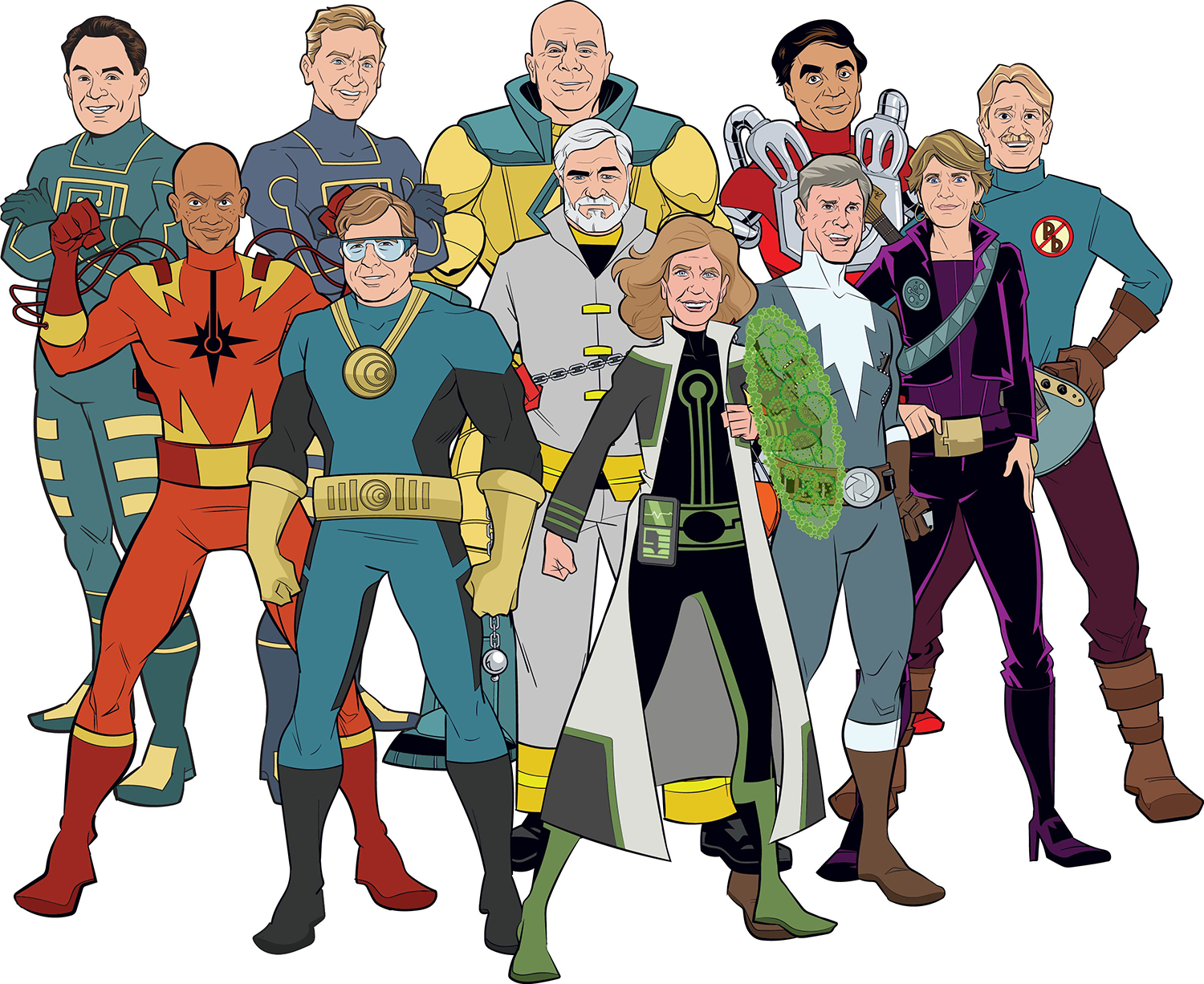
National Inventors Hall of Fame inductees featured as “Innovation Force” superheroes on t-shirts handed out at Camp Invention. (Photo Courtesy National Inventors Hall of Fame)
“Kids are mini-copies of their parents,” says Mickey. “For us it was a lot easier, but I think it is important that for kids who don’t have those two people to push them, to know that they can do it as well. Camp Invention gives them that knowledge.”
In addition to all that they learned about invention and entrepreneurship, the boys stress the impact Camp Invention had on helping them to develop the perseverance and confidence that played a critical role when they eventually built their company together.
A few years after Camp Invention, Mickey was in seventh grade and working with his mother to create a custom, home-school curriculum based on his interests. One of those was, not surprisingly, entrepreneurship. She assigned him the task of researching and creating a business. She intended it to be just an exercise, but it ended up taking on a life that neither of them anticipated. After brainstorming a variety of options, something clicked in his mind.
“I went to Ayaan and I was like, hey, do you remember that awesome idea that you had two years ago? Let's turn that into a business,” says Mickey. “So, we just kind of put our heads together and that's how Ornament Anchor started.”
The boys divided up tasks into areas that they each excelled in. Mickey focused on business development, diving deep into the financial side of things, and Ayaan worked on creative elements, including developing the initial logo design that would become the basis of their trademark and be featured on their website, on packaging, and in their marketing efforts.
Their parents were very hands-off in the early months and watched proudly as the boys navigated their way through things.
“They did everything, except physically drive to the fairs,” says Hamza with a laugh, “because they didn't have a [driver’s] license. We were only there as support when they had questions or needed guidance.”
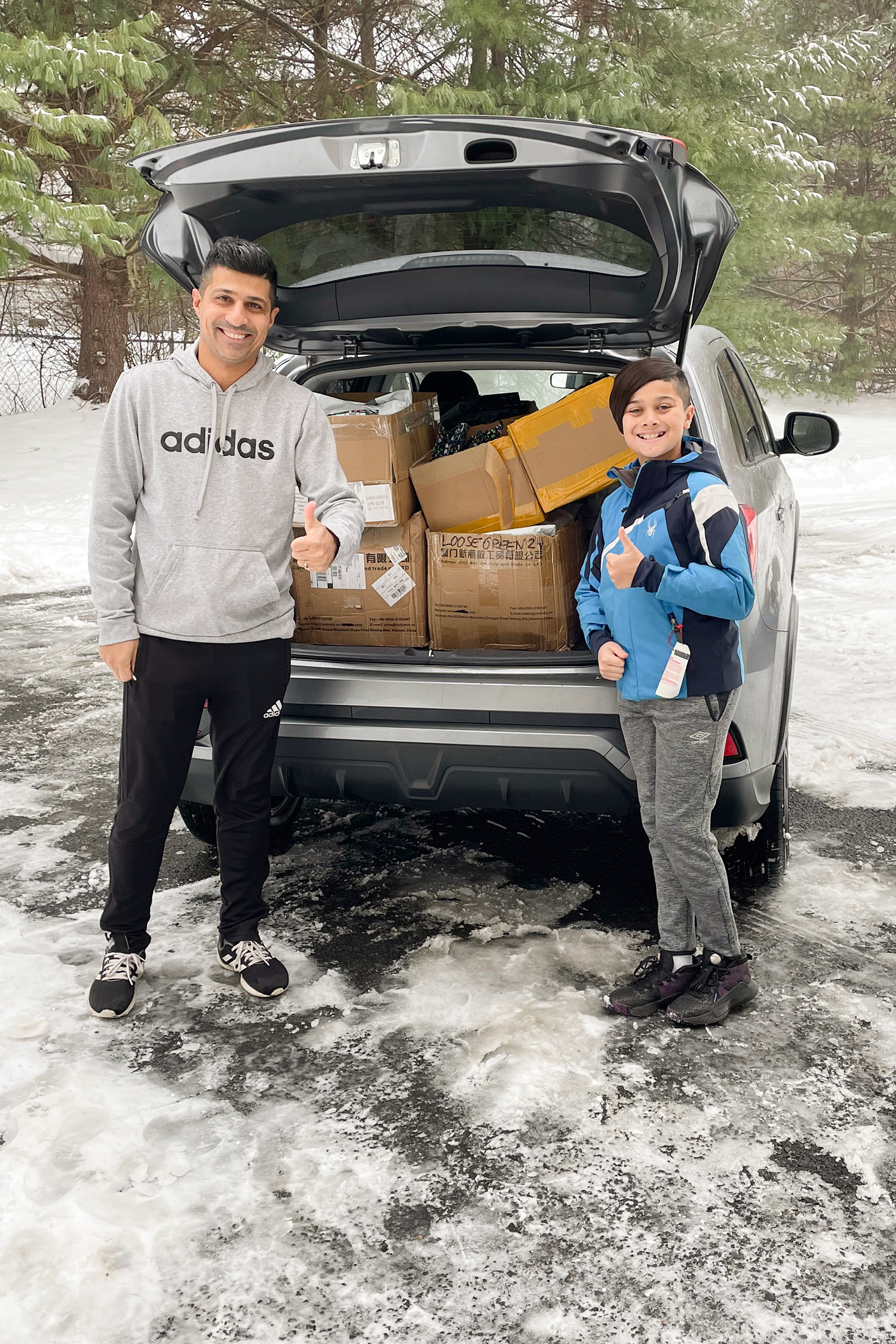
Hamza Naqvi, left, and youngest son Ayaan, with a car full of products to fulfill Ornament Anchor orders in December of 2021. (Photo Courtesy Naqvi Family)
As the brothers focused their efforts, they drew from the firsthand experience they had working with their family, from the lessons they had learned in the classrooms of Nick Messina and Angela Catone, and from the summers spent in the immersive, weeklong Camp Invention programs.
Because of what they had learned about intellectual property, one of their first steps was to apply for a patent.
“If you're an inventor and you don't have a patent, anybody can steal your idea. Anybody can rip you off,” says Mickey. “That was the number one thing we did, before we told anybody else that we were starting the business. It was literally just our parents and us that knew about it.”
The boys got to work figuring out how to file for patent protection, cold-emailing nearly 30 intellectual property attorneys in search of free assistance. They came up empty-handed, which is when they turned to their parents for help.
Mickey crunched the numbers and the boys pitched their parents the idea of a business loan, with interest, that they would use to hire an attorney to help them with securing their intellectual property.
Their parents weighed the risk and decided to say yes. It was a combination of wanting to encourage their children to see this through, and because they believed in the idea. It was also a good bet, because in only a matter of months the boys would repay their debt with profits from their initial sales.
They worked closely with a trusted attorney, poring over patent documents as they worked to determine if their idea was patentable, creating patent drawings, editing draft texts, and eventually filing an application for a provisional patent and registering for trademark protection.
With those hurdles cleared, they officially launched their business just as the holiday shopping season of 2019 was getting into full swing. With packaged products in hand, marketing materials printed, and a live website, they started selling at local craft fairs as Thanksgiving approached. Things just snowballed from there.
Their father Hamza stresses how hard the boys worked. “It wasn't easy for them to balance everything,” he says.
They quickly grew from small sales to individuals to their first large purchase order from QVC, the broadcast television network specializing in home shopping. The boys leveraged a lead that they gained from a social network of other former Shark Tank participants and secured a deal.
“The boys saw that the product really had legs,” says Hamza. “That's when I really started taking them more seriously and helping out.”
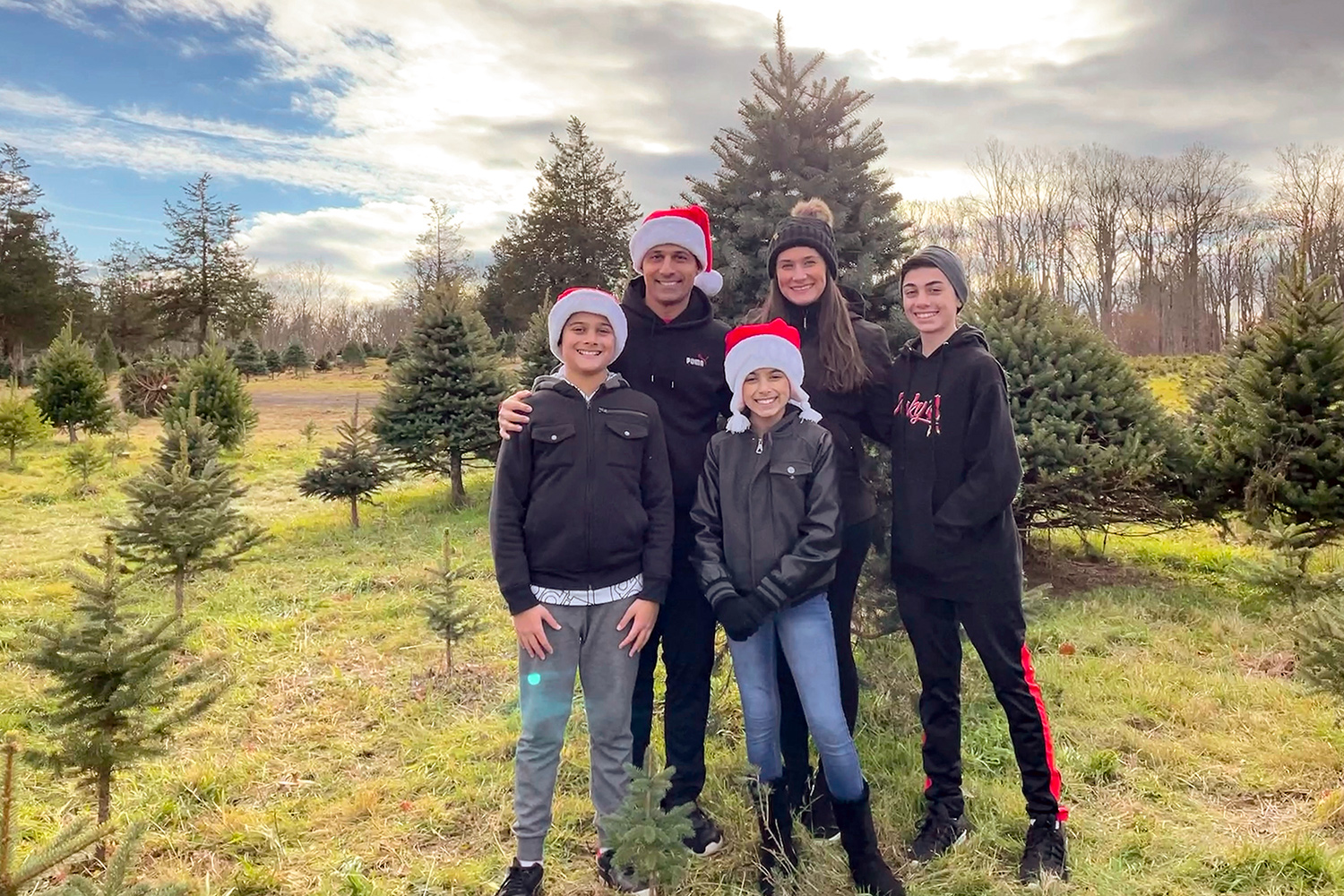
The Naqvi family on a family outing to choose a Christmas tree at Maple Row Farm in Easton, Connecticut. Clockwise from left: Ayaan, Hamza, Amanda, Mickey, and Sofia. (Photo Courtesy Naqvi Family)
As their business grew, so did the shared family effort. Hamza helped the boys with logistics, their mother provided graphic design assistance by bringing Ayaan’s sketches to life, and their sister Sofia helped develop prototypes and acted as a consultant, giving honest feedback on what did and didn’t work. Together they reaped $300,000 in sales in their first year of business.
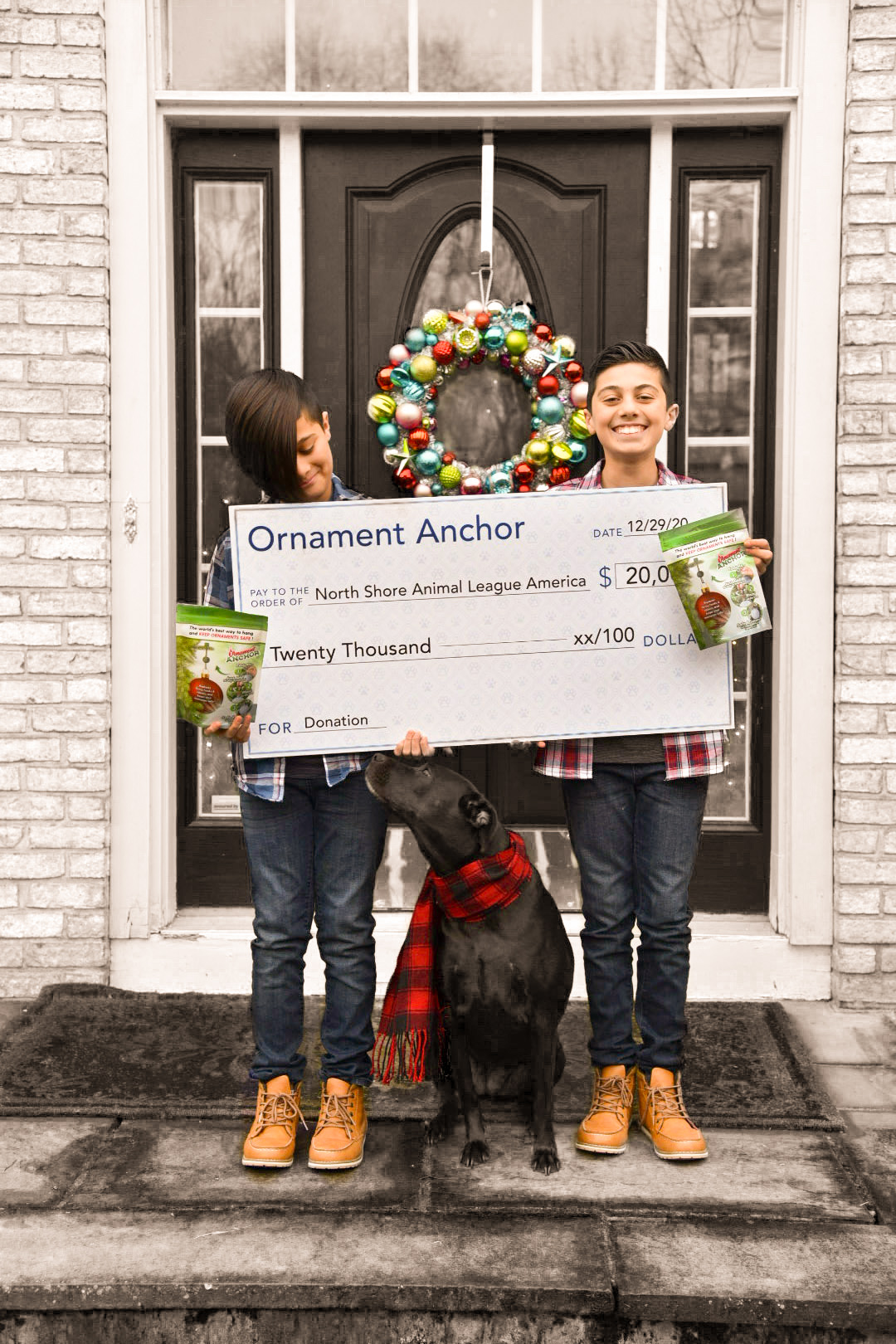
From left, brothers Ayaan and Mickey hold a check for $20,000 made out to the North Shore Animal League of America, where they adopted their dog Zara. Part of their business mission is to give back to the community. (Photo Courtesy Naqvi Family)
When asked what the future holds for them, the brothers quickly reply that they hope to grow their business. Ayaan stresses the importance of giving back to the community, exemplified by their $20,000 donation to the animal rescue from where they adopted their dog Zara. Mickey pauses briefly to reflect. “We don’t want to be remembered as entrepreneurs who created massive companies. We want to be remembered as … good people who gave back to the world. That’s what we want our legacy to be.”
This summer the brothers returned to Camp Invention, not as participants but as counselors guiding and encouraging other young innovative minds.
“It was a lot of fun [working] with the kids,” says Ayaan. “Kids have a different perspective on things, and a lot of their ideas I would never have thought of.”
“My favorite part is when a student is listening to the teacher and all of a sudden,” Mickey says, as he snaps his fingers, “it clicks. That’s the moment that you know they came up with a great idea ... and it is so awesome to watch.”
In 2022, Camp Invention reached more than 100,000 K-6-grade students across the country, including Washington, D.C. and Puerto Rico, and provided roughly 30% of participants’ tuition assistance. A big part of the camp’s mission is to expand innovation education, especially to underserved groups. Parents can learn more about registering their kids as students or counselors for 2023 Camp Invention and other programs at https://www.invent.org/programs.
Credits
Produced by the USPTO’s Office of the Chief Communications Officer. For feedback or questions, please contact inventorstories@uspto.gov.
Story by Jay Premack and Jennifer McIntosh. Contributions from Eric Atkisson. Special thanks to Nick Messina, Angela Catone, and the Naqvi family.
References
USPTO Kids: https://www.uspto.gov/kids/
Camp Invention: https://www.invent.org/programs/camp-invention
National Summer Teacher Institute: https://www.uspto.gov/learning-and-resources/outreach-and-education/national-summer-teacher-institute



